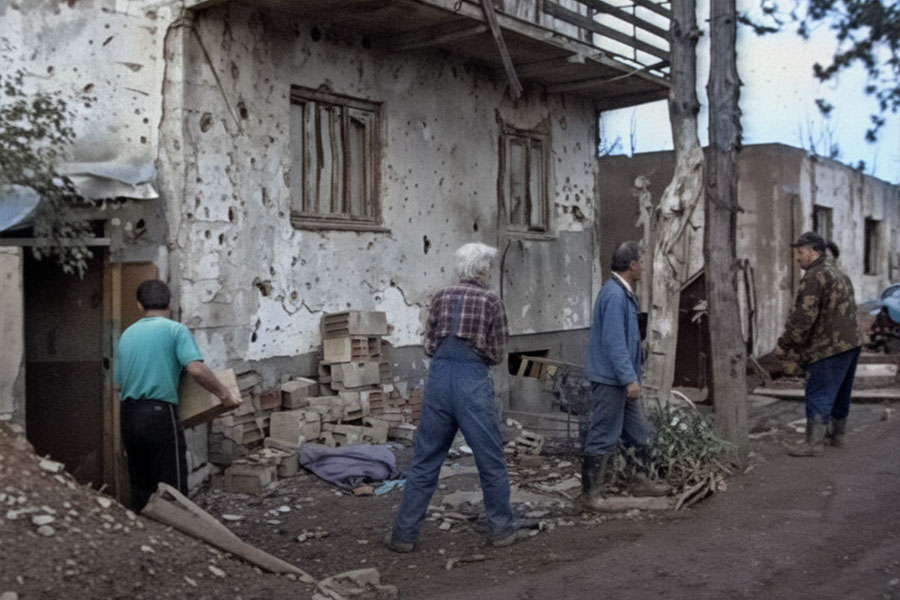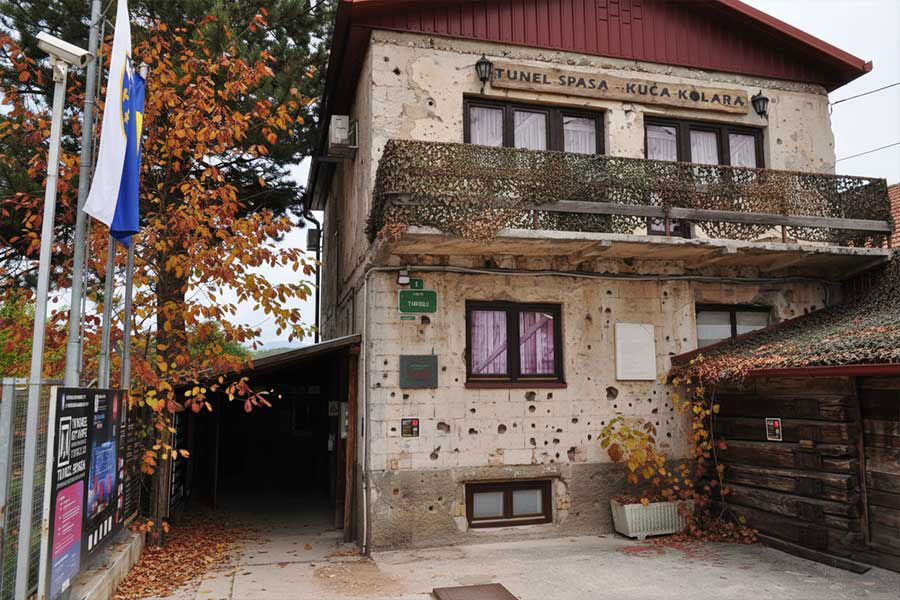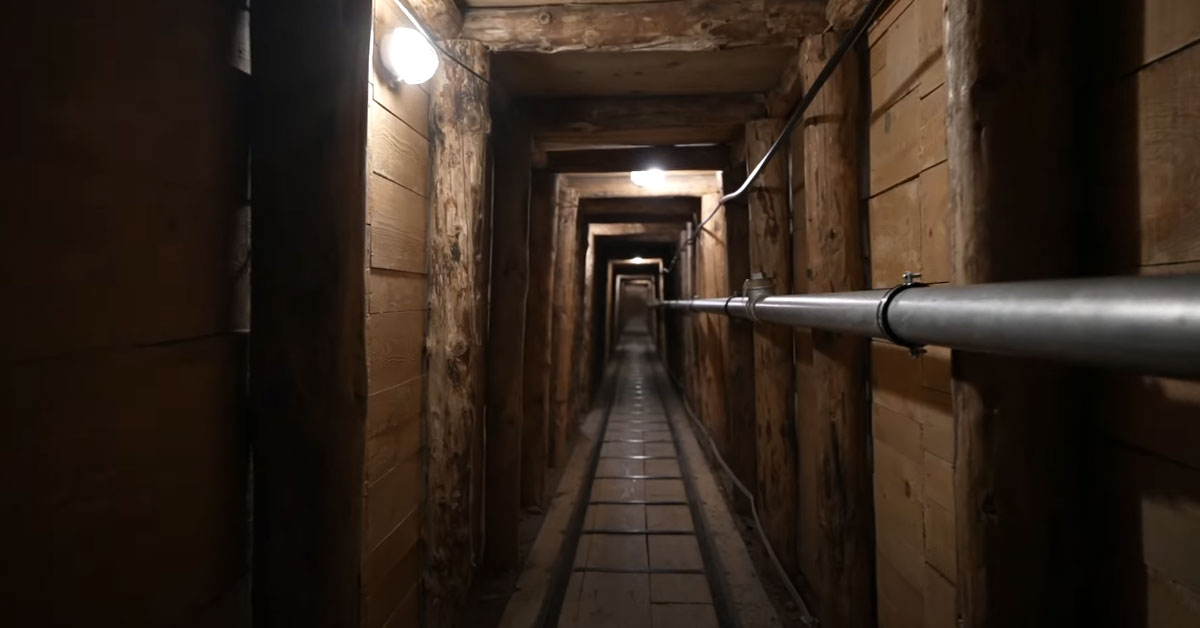Imagine a city separated from the world by just one layer of concrete — an airport runway where UN planes were landing. Above: floodlights and official “neutrality.” Below: a muddy, narrow, hand-dug artery of life. The Sarajevo War Tunnel was not luxury, it was survival. Through it came medicine, food, fuel, letters — and hope.
This tunnel was not just a footnote of history; it was the anatomy of a besieged city. The backbone of logistics, the veins of fuel, the nerves of telephone cables, and the lungs through which Sarajevo breathed. Above were UN planes, below were wooden carts with flour. Above neutrality, below survival. That contrast is the true symbol of the Tunnel of Hope.
Table of Contents
When and why was Sarajevo War Tunnel built?

The siege of Sarajevo had already lasted for a year when the decision was made to dig. The city was completely cut off, the airport runway separating it from free territory. Everything that was essential — food, medicine, fuel, even weapons — could only come beneath the runway.
The digging started in March 1993. Two groups of workers, one from each side, dug by hand until they finally met on June 30, 1993. The very next day, July 1st, the first people walked through.
This was not an infrastructure project; it was emergency care for a city. An improvised lifeline under the runway that kept the city alive.
How was Sarajevo War Tunnel built?

The main engineer and author of the project was Nedžad Branković, who made the technical plans. The tunnel also had a code name: “Object BD” (Dobrinja-Butmir). The work was supervised by members of the First Corps of the Bosnian Army, and everything was done without machines – only shovels, pickaxes, and wheelbarrows.
Men worked day and night in shifts. Darkness was lit by improvised candles made of cooking oil and cloth wicks. The walls were supported with wood, later with steel beams. Water constantly leaked in, so the passage was muddy and heavy to walk through.
The dimensions were small: about one meter wide and 1.5-1.8 meters high. In the deepest part, the tunnel went five meters below the runway. Its total length was around 800 meters.
Later, telephone and electric cables were added, as well as a pipeline for fuel. A small rail line was also placed so carts could move easier. It was literally “tunnel by hand.” No machines, no ventilation, no waterproofing – but it worked.
How was Sarajevo War Tunnel used?
The tunnel became Sarajevo’s lifeline. Through it came flour, fuel, medicine, newspapers, and weapons. The sick and wounded were evacuated. Soldiers, traders, and families passed through daily.
Thousands of people used it every single day. For some it was a way to freedom, for others a way back into the city. For many families it was the only way to survive.
Above the runway, UN forces controlled the “safe zone.” Below, hidden in the mud, life continued. Politics above, survival below.
Where is Sarajevo War Tunnel and what can you see today?

The tunnel is in Butmir, near the airport, at the address Tuneli 1, Ilidža – Donji Kotorac, in the yard of the Kolar family house. During the war, the house was the entrance to the tunnel. Today it is a museum.
Inside the museum you can watch a short documentary film about the siege, see uniforms, tools, photographs, and improvised objects from the 1990s. Visitors can also walk through part of the original tunnel – about 20 to 25 meters that are still preserved.
It is short, but enough to feel the claustrophobic atmosphere, the damp air, and the need to walk bent over. Outside you see a calm suburban garden. Inside, you feel the silence of history. The contrast is still strong.
Sarajevo War Tunnel – Opening hours and ticket prices
Opening hours:
- April – October: 08:30 – 17:30 (last entry 17:00)
- November – March: 09:00 – 16:00 (last entry 15:30)
Ticket prices:
- Adults: 20 BAM
- Students and pupils: 8 BAM (with ID)
- Audio guide: 3 BAM
- Children under 6: free
Tickets are paid in cash only, in Bosnian Convertible Marks (BAM). Cards and foreign currency are not accepted.
How do I get to the Sarajevo War Tunnel?
The easiest way is by taxi from the city center, or by joining an organized tour. You can also take a tram to Ilidža, then a short taxi ride to Butmir. Most “war tours” in Sarajevo include the Tunnel as one of their main stops, usually with one hour reserved – enough for the film, the exhibition, and a short walk inside the tunnel.
The Tunnel as a lesson
What you see today is not just a passage. It is compressed history. A house that was the entrance, a muddy corridor that was salvation, and a backyard that was the border between life and death.
Above: sunshine, grass, and peace. Below: a narrow, damp passage where people breathed carefully and walked bent over. Above: the voice of a guide. Below: the silence of the past. The museum looks ordinary today, but that is exactly why it shocks – this used to be the city’s only way to breathe.
FAQ
How long is the tunnel, and how much can visitors walk today?
The full length was about 800 meters, but today visitors can walk 20-25 meters.
Why was it built?
To connect the besieged city with free territory and bring food, medicine, fuel, weapons, and communication.
Where exactly is it located?
Tuneli 1, Ilidža – Donji Kotorac, Sarajevo.
How much is the ticket?
20 BAM for adults, 8 BAM for students and pupils, 3 BAM for the audio guide, free for children under 6.
Who was the engineer behind the project?
The main engineer was Nedžad Branković, and the work was supervised by the First Corps of the Bosnian Army.
Our Most Popular Tours To Sarajevo
We offer many tours that include a visit to Sarajevo and its most popular locations:
- Sarajevo Siege Tour & War Tunnel 1992 / 1996 (Most Popular)
- Full Day tour from Sarajevo to Međugorije & Mostar
- Full Day Tour from Sarajevo to Travnik and Jajce
- Full-Day 5 Cities Tour from Sarajevo to Herzegovina (Mostar)
- Full day Tour from Sarajevo to Dubrovnik (Kotor or Split)
- Full Day tour from Sarajevo to Belgrade
Don’t Hesitate To Say Hi!
Got any questions about our tours or the city? Don’t hesitate to contact us anytime for more info and booking.
Use the following phone number and email:

